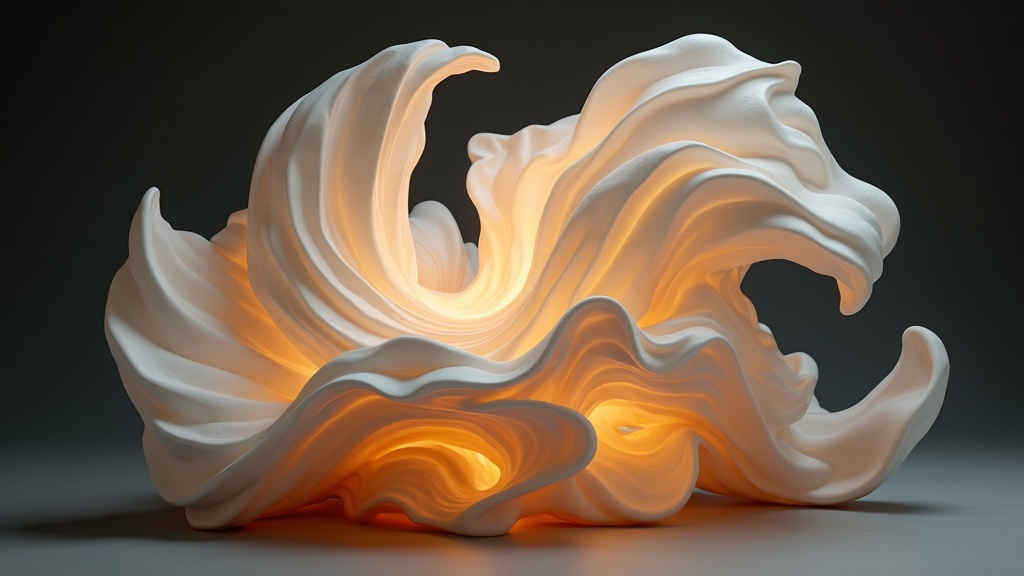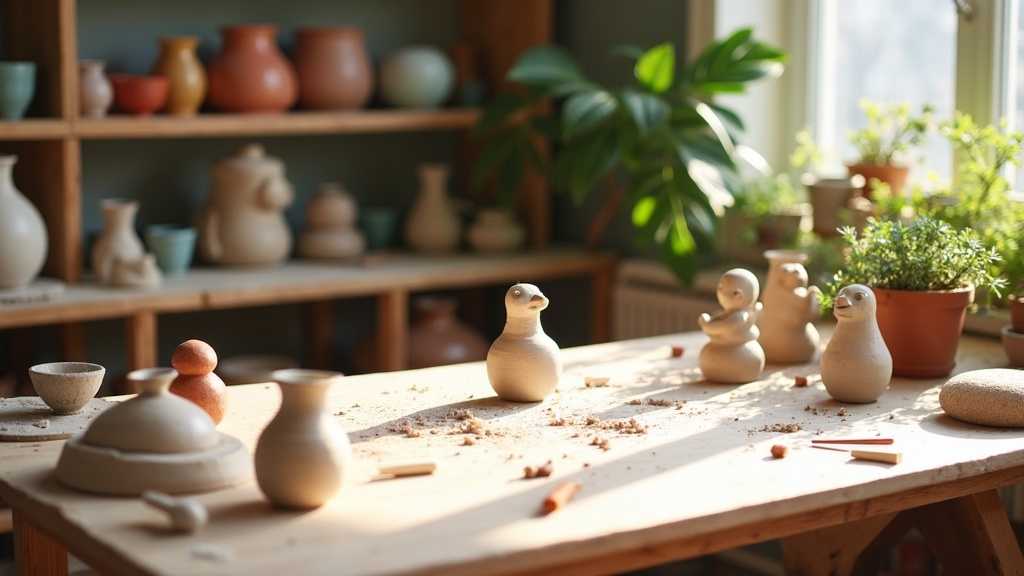Inspirational And Motivational Content Creation
Inspirational and motivational content creation isn’t just about saying the right words. It’s about sparking something in people that can move them to action, reflection, or lasting change. I often see it compared to the work of a sculptor: starting with a raw idea and gradually shaping it into something powerful and unforgettable. This isn’t about what you recognize. This is about what you feel before your mind tries to name it.

Understanding Inspirational And Motivational Content Creation
Getting messages across that lift people up or push them to act takes more than just clever writing or a catchy quote. It’s actually about finding honest stories, relatable emotions, and real-life moments that readers or viewers can connect with. Like a sculptor eyes a block of marble, looking for the shape inside, I try to uncover what matters at the core of each message I want to share.
Inspirational content focuses on hope, possibility, and overcoming setbacks. Motivational content zooms in on action, personal growth, and making changes. There’s a pretty big overlap, but understanding the feel and focus of each one helps me decide which approach to use, and how to blend them for the biggest impact.
It’s not just about the words. Images, videos, music, or even short audio clips can be super powerful ways to create that experience that lifts people up or pushes them to go for something they want. Tapping into these creative forms is a lot like how sculptors use texture, shape, and light to get across certain feelings or ideas.
Getting Started With Your Own Inspirational Content
Before I even start brainstorming topics, I always focus on the “why” behind what I want to create. What’s the feeling I want people to walk away with? Am I aiming to fire them up to pursue a goal, or to show them they’re not alone if life feels hard? Knowing this upfront shapes everything I make, right down to the words I choose and the story’s rhythm.
For beginners, building a strong foundation is all about these basics:
- Clarity of Message: Decide what you want to say and make it as clear and direct as possible. People won’t stick around for mixed signals.
- Authenticity: People can spot fluff or forced positivity a mile away. Drawing from your own wins, losses, or even everyday struggles is much more powerful. Think of it like pulling out the form in a sculpture that was always there, rather than slapping something on the outside.
- Format: Try different delivery methods, maybe writing, audio, or visual content. Sometimes a simple quote with the right photo can have more impact than a long essay.
- Audience: Consider who you’re trying to reach. Each person brings their own block of marble, so to speak, and you’re just helping them see what’s possible in it.
Quick Guide to Crafting Uplifting Content
I like to break it down into easy steps that work for almost any platform or format:
- Start with an Honest Story: It could be your own, or something you’ve seen happen around you. The best pieces always start from something that really happened.
- Find the Core Message: What’s the lesson, or the “a-ha” moment you want to highlight?
- Use Relatable Language: Keep the words simple and down-to-earth. People connect with what feels real, not what just sounds fancy.
- Add Visuals for Texture: A strong photo, sculpture, or simple graphic can anchor your message and bring the feeling home. Sometimes it’s the flow of a sculpture’s lines that inspires, not its recognizable subject.
- End with a Nudge: This can be a call to action, a question to mull over, or just a moment that sticks in someone’s mind. You don’t always have to tell folks what to do, sometimes, just showing them what’s possible is more than enough.
These steps keep the process clear, and help me avoid content that just sounds good but doesn’t really reach anyone.
Common Roadblocks and How To Overcome Them
Creating uplifting or motivational content has its share of challenges, both in coming up with ideas and connecting with an audience. Here are a few common bumps in the road, with some ways I’ve learned to work through them:
- Self-Doubt: Wondering if what you have to say matters? Try sharing small, day-to-day stories. Sometimes what feels ordinary to me has a big impact on someone else.
- Staying Genuine: It’s easy to slip into overused phrases or “toxic positivity.” Balance your content by showing the tough stuff too, not just the success at the end. People relate to the work that goes into the sculpture, not just the shine of the finished piece.
- Creative Burnout: Keeping the ideas fresh can get tough. I find inspiration by exploring other forms of creativity, taking a walk among interesting public sculptures or spending time outdoors gives me new ideas I can bring back into my writing or videos.
- Engagement Fatigue: Not every post is going to blow up, and that’s okay. Focus on feedback and real conversations, not just the numbers. Like a sculpture that means more up close than from far away, sometimes your best impact happens in quiet ways.
Self-Doubt
Plenty of folks (myself included) have looked at their rough drafts and thought, “This isn’t inspiring enough.” The trick is just to keep working and sharing anyway. Think about working clay or stone with your hands. The first try might look rough, but you find the right lines and shapes by showing up consistently.
Staying Genuine
It’s easy to fall into the trap of thinking you have to sound upbeat all the time. The truth is, the real spark comes from being honest. Your readers will feel it, just like they sense honesty in a piece of art.
Creative Burnout
Taking breaks matters more than most realize. Visiting museums, exploring installations, or even just changing up your space can get ideas flowing again. Viewing different sculptures, for example, can nudge your brain in new directions and open up fresh ways to craft words or images.
Engagement Fatigue
Numbers might not always line up with effort. A single, heartfelt comment from a reader who felt moved is usually worth far more than dozens of empty likes. Look for genuine connections first; the stats can follow after.
Moving forward sometimes just means showing up, chipping away at the marble, and believing that shape is there, even if you can’t see it yet.
Tips And Tricks For Creating Memorable Motivational Content
Here’s how I try to keep things both memorable and meaningful:
Lean Into Sensory Details: Paint pictures with words, colors, or sounds. Sometimes just describing the way sunlight falls on a sculpture inspires a sense of possibility or wonder.
Focus On Turning Points: People remember transformation, the “before and after,” or the struggle that gave way to progress. Highlighting those moments connects at a human level.
Use Analogies To Art: Comparing growth or change to something physical, like sculpture, helps ideas click. Just as a sculptor chips away at excess, motivational content can help people see what’s possible when they let go of doubt or fear.
Invite Reflection Over Instruction: I get the best engagement when I ask questions, not just offer answers. For example, “What would you sculpt with a fresh block of time?” goes further than “You should use your time better.” By inviting people to mull over their own possibilities, you draw them into the experience.
These approaches make content more memorable and so much more personal. Adding a bit more detail, you could try incorporating exercises or prompts for your audience. For instance, after sharing a story, ask them to write or think about a moment of change in their own life and what shape their ‘sculpture’ might take. The goal is to create not just readers, but participants who carry your message into their everyday choices.
Inspirational Content In The Real World
The impact of uplifting content goes way beyond screens and pages. Motivational stories and visual pieces are everywhere, from classroom walls to public parks. Think of abstract sculptures that people see on city walks. Sometimes those pieces stick with you, making you wonder, pause, or reconsider something in your own life.
- Community Spaces: Murals and sculptures often inspire whole communities, offering a sense of pride or hope or a reminder that everyone can create something lasting. Sometimes, seeing a new mural pop up can shift how an entire neighborhood feels about itself.
- Social Media: Quick, shareable posts often reach more people than a long speech ever could. These “minisculptures” of thought help keep inspiration coming at just the right moment, letting people connect and share those sparks with friends, family, or their own audience. By turning everyday observations into micro stories, you amplify your reach and help positivity spread fast.
- Personal Growth: Motivational content supports people in setting goals, working through challenges, or even just getting out of bed each morning. The ripple effect of reading a simple, honest message can mean the difference between giving up and trying again that day.
What’s truly powerful is that this kind of content creates a cycle. As more people are moved by authentic stories and fresh perspectives, they feel encouraged to share their own, building communities bound by empathy and the possibility of change for the better. This synergy leads to lasting impact, both online and off.
Frequently Asked Questions
These are a few questions people ask me all the time about shaping truly inspiring content:
Question: What makes inspirational content really work?
Answer: It’s about honesty and emotion more than fancy language. The best pieces make people feel something, just like powerful sculptures do. Sometimes you can’t look away.
Question: How do I find my own style?
Answer: Look at creators, artists, or even sculptors you admire. Notice what makes their work feel “real” to you, then practice bringing that same honesty to your own voice. Over time, your unique style will shine through in a natural way.
Question: Where can I find inspiration if I feel stuck?
Answer: Walk through a park, visit a local museum, or scroll through posts from creators in very different fields. When you’re open, even a shadow cast by a sculpture can spark a new idea. Also, try talking to people about what inspires them. Sometimes, the act of listening can kindle new ways to approach your own creative work.
Final Words
Motivational content creation is a meaningful pursuit, a bit like sculpting. Often, you work patiently to reveal something special under the surface, both for yourself and the people who find your work. Trust the process, keep exploring new ways to share your stories, and remember: the feelings you create often stick with people long after the words fade. Your effort shapes more than just content. It shapes an experience that can inspire change, reflection, and action in everyone it reaches. Stay true to your vision, and keep chipping away until you see your purpose take form in the hearts and minds of others.

